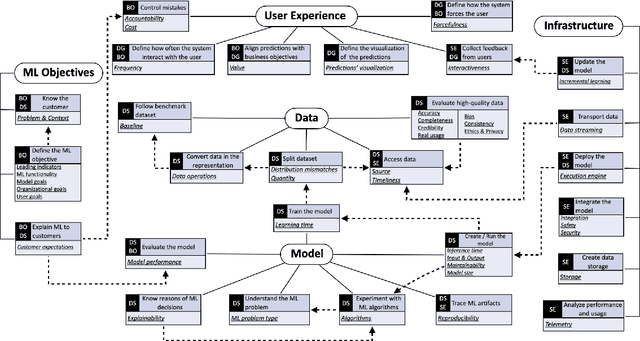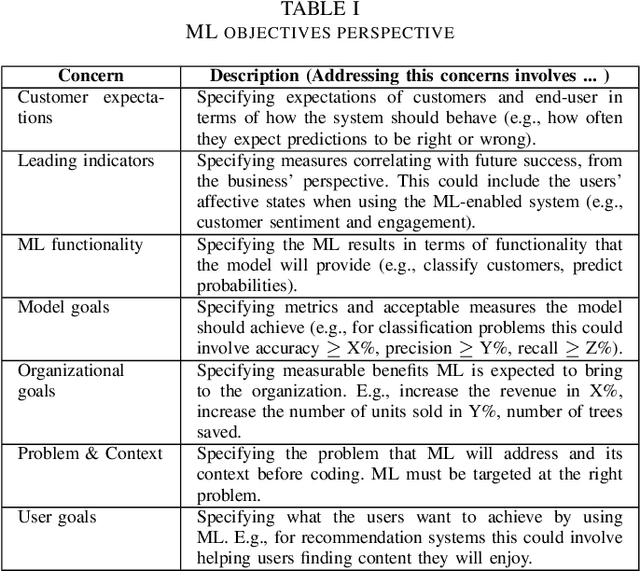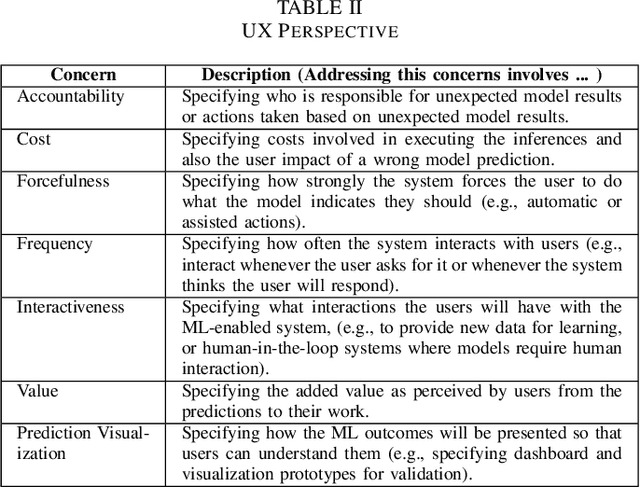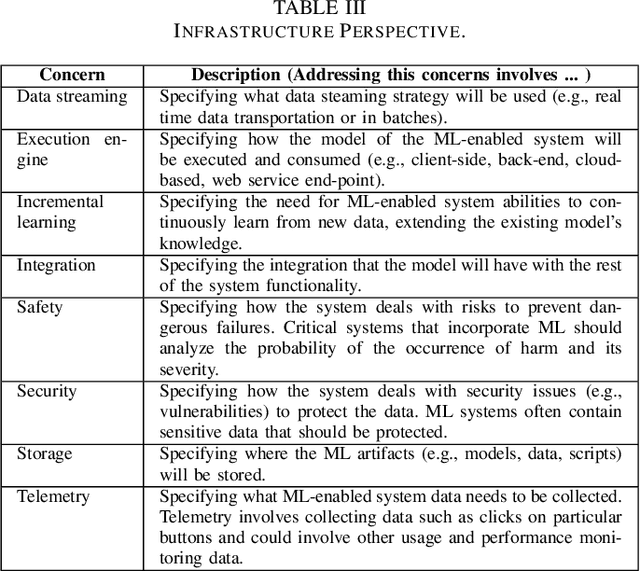Hugo Villamizar
Agile Management for Machine Learning: A Systematic Mapping Study
Jun 25, 2025Abstract:[Context] Machine learning (ML)-enabled systems are present in our society, driving significant digital transformations. The dynamic nature of ML development, characterized by experimental cycles and rapid changes in data, poses challenges to traditional project management. Agile methods, with their flexibility and incremental delivery, seem well-suited to address this dynamism. However, it is unclear how to effectively apply these methods in the context of ML-enabled systems, where challenges require tailored approaches. [Goal] Our goal is to outline the state of the art in agile management for ML-enabled systems. [Method] We conducted a systematic mapping study using a hybrid search strategy that combines database searches with backward and forward snowballing iterations. [Results] Our study identified 27 papers published between 2008 and 2024. From these, we identified eight frameworks and categorized recommendations and practices into eight key themes, such as Iteration Flexibility, Innovative ML-specific Artifacts, and the Minimal Viable Model. The main challenge identified across studies was accurate effort estimation for ML-related tasks. [Conclusion] This study contributes by mapping the state of the art and identifying open gaps in the field. While relevant work exists, more robust empirical evaluation is still needed to validate these contributions.
Towards Perspective-Based Specification of Machine Learning-Enabled Systems
Jun 20, 2022



Abstract:Machine learning (ML) teams often work on a project just to realize the performance of the model is not good enough. Indeed, the success of ML-enabled systems involves aligning data with business problems, translating them into ML tasks, experimenting with algorithms, evaluating models, capturing data from users, among others. Literature has shown that ML-enabled systems are rarely built based on precise specifications for such concerns, leading ML teams to become misaligned due to incorrect assumptions, which may affect the quality of such systems and overall project success. In order to help addressing this issue, this paper describes our work towards a perspective-based approach for specifying ML-enabled systems. The approach involves analyzing a set of 45 ML concerns grouped into five perspectives: objectives, user experience, infrastructure, model, and data. The main contribution of this paper is to provide two new artifacts that can be used to help specifying ML-enabled systems: (i) the perspective-based ML task and concern diagram and (ii) the perspective-based ML specification template.
 Add to Chrome
Add to Chrome Add to Firefox
Add to Firefox Add to Edge
Add to Edge